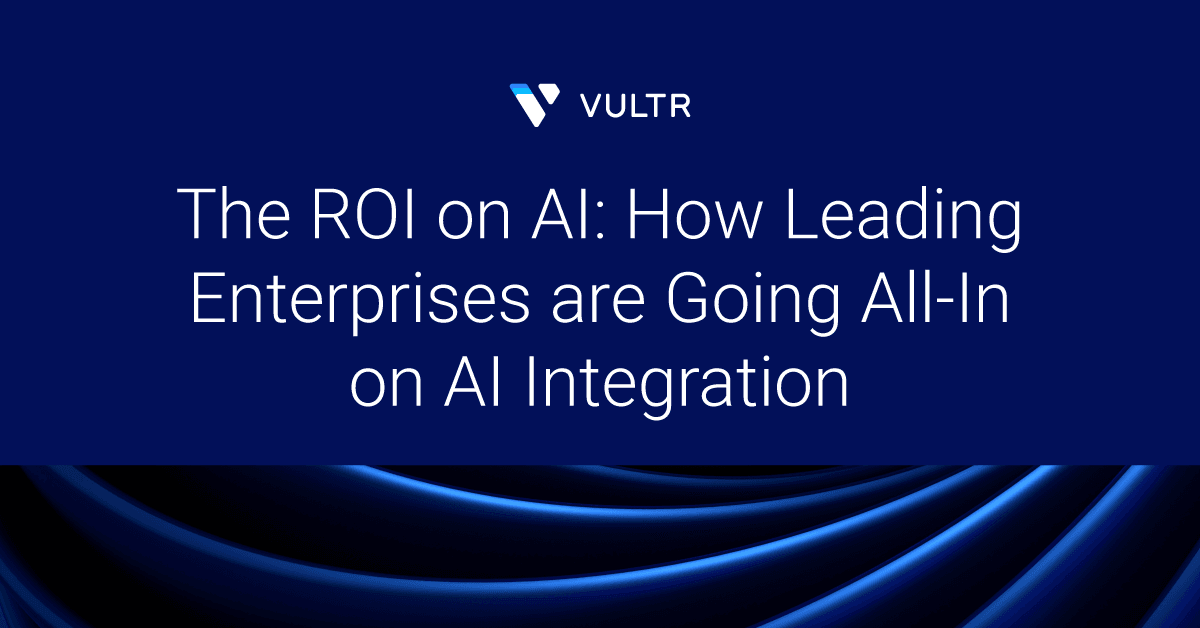Enterprises have changed their approaches to AI. No longer are they lightly experimenting with AI and considering niche areas of the business where AI can factor. Instead, they’re thinking comprehensively about how to integrate AI into both critical and everyday workflows, leveraging it and innovating according to specific business needs.
At least, that’s what the forward-thinking organizations — the ones reaping the financial rewards of AI application — are doing.
Vultr CMO Kevin Cochrane and S&P Global Market Intelligence chief analyst Eric Hanselman hosted a recent webinar, “Navigating the Path to AI Success”, analyzing the findings from S&P’s second annual survey of over 2,000 highly skilled AI decision-makers. The survey and ensuing report explored global trends in how organizations are advancing AI and embedding it into their business, breaking them down into three classes: Operational, Accelerated, and Transformational.
That third class — Transformational, where AI is built into fundamental aspects of the business and into almost all day-to-day functions — is seeing not just the most innovation, but also the most reward.
“[Transformation] is when organizations get really serious looking at their tech stack, looking at their business services, and thinking ‘How do I reinvent my product portfolio? How do I reinvent core business processes? How do I reinvent my customer experience?” Cochrane said. “Those are the people that are starting to see that outsized gain in terms of financial performance.”
The majority of Transformational organizations today are pushing almost half their IT budget into the cloud. Whereas less advanced businesses mostly restrict their AI use to third-party platforms like ChatGPT, Transformational ones use open-source models as a foundation and adapt them to fit their specific business needs.
And this cloud innovation isn’t just happening in the traditional spaces. 30% of survey respondents said they use (or plan to use) alternative clouds and neoclouds for their new GenAI projects, compared to only 18% opting for hyperscalers.
Concerns about openness, flexibility, and adaptability of outdated legacy clouds are driving this pivot. But with it comes risk: Newer vendors often lack the operating history to bring sufficient compliance and security support to the table.
Vultr, with its 10-year operating history and some of the highest levels of compliance certifications globally, brings the best of both worlds.
“What is most critical for us here at Vultr is that the entire stack needs to be grounded in security and compliance,” Cochrane said. “Suddenly, neoclouds, alternative cloud providers, are now seen as a viable option for the enterprise … There are options out there, there are alternative providers with global scale, with security and compliance, like Vultr, here to help.”
Cochrane also highlighted platform engineering teams as critical to mainstreaming AI workflows across a business and implementing a diverse range of AI models — tailoring specific pipelines to specific use cases within a given business in order to best optimize AI stacks.
He and Hanselman compared today’s AI landscape to the early days of the internet: “Half-measures” simply aren’t enough and will cause more problems than they aim to solve. Organizations need to go all-in.
“Mainstream adoption should not lag,” Cochrane said. “People should be really serious about quickly accelerating and unlocking new growth and unlocking new efficiencies by getting to a Transformational stage sooner rather than later.”
Watch the full webinar and access the 2025 AI Maturity Report here.

